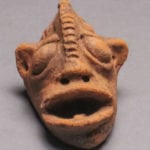 Weird Stuff
Weird Stuff  Weird Stuff
Weird Stuff  Mysteries
Mysteries 10 Tragic Disappearances and Deaths in Joshua Tree National Park
 History
History 10 Ways Childhood Really Sucked in the Old West
 Music
Music 10 Name Origins of Famous Bands from the 1990s
 Religion
Religion 10 Biggest Turnarounds by the Catholic Church
 Weird Stuff
Weird Stuff 10 Unbelievable Times Laws Had Unintended Consequences
 Humans
Humans Ten Historic Women Who Deserve Way More Credit Than They Got
 Movies and TV
Movies and TV 10 Films That Spawned Major Lawsuits
 History
History Ten Times Towns Were Wiped Off the Face of the Earth
 Creepy
Creepy 10 of the Most Disturbingly Haunted Public Houses in the UK
 Weird Stuff
Weird Stuff 10 Niche Subcultures That Are More Popular Than You Might Think
 Mysteries
Mysteries 10 Tragic Disappearances and Deaths in Joshua Tree National Park
 History
History 10 Ways Childhood Really Sucked in the Old West
Who's Behind Listverse?

Jamie Frater
Head Editor
Jamie founded Listverse due to an insatiable desire to share fascinating, obscure, and bizarre facts. He has been a guest speaker on numerous national radio and television stations and is a five time published author.
More About Us Music
Music 10 Name Origins of Famous Bands from the 1990s
 Religion
Religion 10 Biggest Turnarounds by the Catholic Church
 Weird Stuff
Weird Stuff 10 Unbelievable Times Laws Had Unintended Consequences
 Humans
Humans Ten Historic Women Who Deserve Way More Credit Than They Got
 Movies and TV
Movies and TV 10 Films That Spawned Major Lawsuits
 History
History Ten Times Towns Were Wiped Off the Face of the Earth
 Creepy
Creepy 10 of the Most Disturbingly Haunted Public Houses in the UK
10 Fascinating Facts About Ancient Cuisine
They say that the past is another country, and if you look at the eating habits of the peoples of the ancient world, you can see why. Here are 10 surprising examples of the weirdness of ancient eating culture.
10 Rome’s MSG-Laden Food
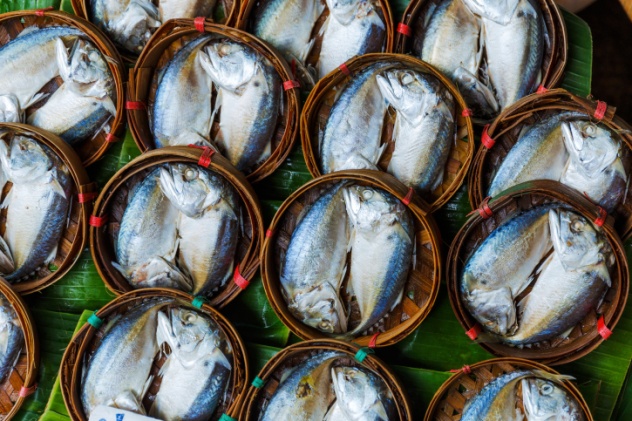
The most popular condiment in the Roman world was garum (sometimes called liquamen), a sauce made from filling pots with layers of fish or fish guts and salt and leaving them out in the sunlight for awhile. As the mix lay in the Sun’s heat, the stomach acids of the fish would eat through their bodies and break them down entirely, leaving behind a brown goo. As proteins in the fish broke down, they released amino acid chains, including glutamic acid, which would combine with the sodium to create a salty fish sauce absolutely packed with monosodium glutamate, or MSG.
Garum was incredibly popular among Romans, who used it as a sauce, dip, and salt substitute. They put it on pretty much everything, even custard. Large factories produced the sauce for export throughout the Mediterranean. Different varieties were combined with vinegar, wine, honey, herbs, and oil. There were both expensive, high-quality sauces for the wealthy as well as cheap stuff for the slaves.
Taxes on salt and pirate attacks on trade would eventually put an end to the mass production of garum, but it is still made in some parts of southern Italy and is also available at Ava Gene’s, a Roman-themed restaurant in Portland, Oregon. It is likely that Romans transported to a modern food court would find Vietnamese and Cantonese food more familiar than Italian pasta, particularly considering the lack of noodles and tomatoes in ancient Rome.
9 Chinese Cannabis
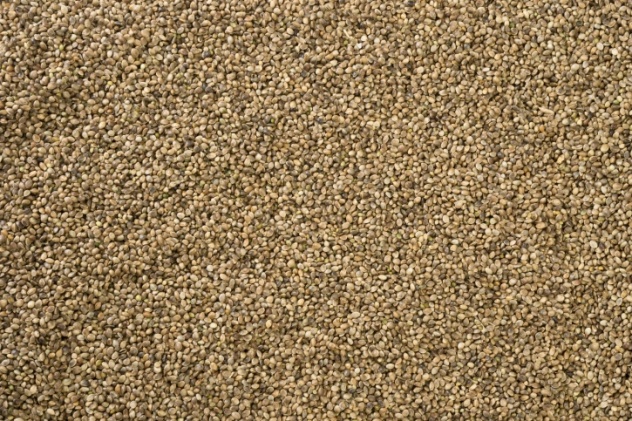
The non-psychoactive form of cannabis was used as a food crop by rural populations across Eurasia in ancient times, including in ancient Rome, Egypt, and China. Cannabis seeds were used to make oil and flour, which became porridge or fried desserts. One of the names for ancient China was “the land of hemp and mulberry.” Hemp, known as ma, began to be consumed in seed form during the Chou dynasty. It was widely used as a food crop during spring and autumn, the Warring States Period, and during the Qin and Han dynasties, remaining part of the Chinese diet until the 10th century AD.
The Li Qi placed hemp as one of the five great grains of ancient China. (The others were barley, rice, wheat, and soybeans.) They were well aware of the psychoactive properties of marijuana, and they distinguished between ma fen, or toxic cannabis, and ma ze, or nontoxic hemp. Ma fen was said to cause people to “see devils” and was used by necromancers, along with ginseng, in order to see the future. Second-century-AD physician Hua T’o is said to have combined cannabis with wine to make an anesthetic for operations. Some, however, believe that the ma referred to as a food crop in ancient texts was actually hu ma, or foreign hemp, also known as sesame seeds. But that’s no fun.
8 The Gladiator Diet
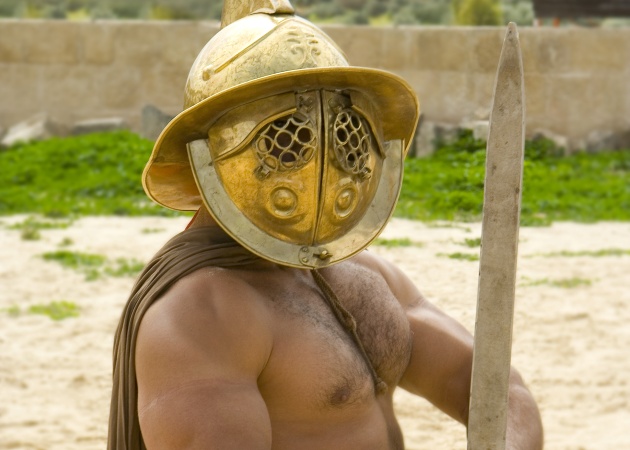
Analysis of collagen and mineral content in bone samples taken from the intermingled remains of 68 mostly young men in the ruins of the ancient Roman city of Ephesus have revealed that gladiators ate a largely vegetarian diet. A spectrometer was used to measure the amount of strontium in the bones of one of the oldest skeletons at the site, a man in his fifties believed to be Euxenius, a retired gladiator who became a trainer. The researchers expected to discover low levels of strontium, which would be consistent with high meat consumption. Instead, they found the very opposite, indicating that the man consumed a diet consisting of mainly barley and beans.
Gladiators held to a strict eating regimen and were allowed to feast only on the night before a fight. Their diet, combined with strenuous lifestyle, may have contributed to high rates of tooth decay, but the high strontium in their diet may also have helped them to heal faster and stabilize bones during injuries. Later research indicated that the mostly vegetarian diet was shared by non-gladiators as well. Gladiator remains, however, contained a higher level of minerals, which is likely because the fighters often consumed a sports drink made from vinegar mixed with plant ash, which helped to fortify the body and promote bone healing after injuries.
7 Oily Pastries Of The Gods

Food was an important part of Hittite spiritual life, both as sacrifices and in ritual magic. Animal sacrifice was an important part of “feeding and caring for the gods.” An animal, such as a pig, ox, or sheep, was sacrificed, and its heart, liver, and several choice cuts were devoted to divine sacrifice, with the rest of the animal presumably enjoyed by the mortals. The sacrificial meal was usually supplemented with baked goods, sweets, and beverages.
Vegetable oil and oily pastries were extremely important to Hittite cuisine and religion. One meal set before the Hittite royalty during religious ceremonies was saknas parsur, or stew of oil. After a high-cholesterol sacrificial offering of sweet-oil-filled pastry and a pitcher of cold beer, a common Hittite prayer went: “O gods, let your stomach be filled with vegetable oil and your brain intoxicated with beer!”
The Hittite word for bread and pastries was ninda, and one form of Hittite baked good was ninda gurra, or thick bread, commonly used in ceremonies and rituals. One type of pastry used was ninda gullant(i), meaning ring-shaped or hollow bread, which raises the possibility that the ancient Anatolians appeased their gods with offerings of doughnuts.
6 Sumerian Beer Culture

The first known beer was called kui, brewed by the ancient Chinese around 7,000 BC. The earliest evidence of beer brewing in the West is from 3500–3100 BC at the Godin Tepe site in modern Iran, but it is believed that the Sumerians were brewing much earlier than that, even as far back as 10,000 BC. Sumerian women generally brewed their beer from bippar (twice-baked barley bread); it was as thick as porridge and drunk through a straw.
The Sumerian gods were also into beer in a big way. A famous poem has the god of wisdom, Enki, getting so drunk that he ended up giving away the sacred meh, or laws of civilization, to Inana, the patron goddess of the city of Uruk. By the time Enki woke up with a raging hangover, Inana was halfway back to the city to teach humans the secrets of political office, crafting, hairstyles, holy purification rites, sexual intercourse, and much more. The goddess Ninkasi was the personification of beer and presided over its manufacture. A hymn to the deity reads like a glorious ode to beer:
Ninkasi, you are the one who pours out the filtered beer of the collector vat, it is like the onrush of the Tigris and the Euphrates. [ . . . ] What makes your heart feel wonderful, makes [also] our heart feel wonderful. Our liver is happy, our heart is joyful. You poured a libation over the brink of destiny, you placed the foundations in peace [and] prosperity. May Ninkasi live together with you!
There are few available records to show how the Sumerians brewed their beer, as apparently the process was so well known and commonplace that no one thought to write it down. In 2006, archaeologists in northern Syria brewed a beer from barley and emmer based on their interpretation of archaeological finds, but we cannot be sure that they got it right. Some killjoys have even suggested much Sumerian beer may have been alcohol-free, though its hard to see why they would have been so enthusiastic over it if that were the case.
5 Sacred Onions

Ancient Egyptian art often depicts fishing and hunting activities, but forensic evidence has suggested that most inhabitants of the Nile actually had a vegetarian diet. A French research team analyzing the carbon atoms of Egyptian mummies dating between 3500 BC and AD 600 discovered that there was a remarkable consistency in their diet over time: They ate mainly wheat and barley, with some millet and sorghum. One exception made was for the builders of the pyramids, who consumed 1,800 kilograms (4,000 lb) of beef, lamb, and goat every day. That was a perk of working for the government, though, and for the most part, meat and fish were more rarely eaten than plant foods.
Of the vegetables known at the time, the most important was undoubtedly the onion (as well as its relatives, leeks and garlic). After arriving in Egypt from Central Asia, the onion was soon being enjoyed by both the rich and poor. As a non-spoiling source of hydrating nourishment, onions helped to sustain the laborers who built the great pyramids and other monuments of Pharaonic Egypt.
The onion also played an extremely important role in Egyptian religion, as did garlic and leeks. They were associated with the milk teeth of Horus and used in sacrifices to him. They were also linked with the solar falcon god Sokaris, who was celebrated with a festival called Netjeryt, or the Night of the Onion. Priests were depicted holding onions or heaping them onto altars. They were also tied with the afterlife, as their concentric layers represented eternal life, and they were used in the mummification process.
According to some Greek and Roman writers, however, the Egyptians swore oaths holding an onion (and garlic) and considered it a sin to eat one, and one group even worshiped wild onion as a god. The archaeological evidence contradicts this, but these ideas would later inspire the Roman satirist Juvenal:
How Egypt, mad with superstition grown,
Makes gods of monsters but too well is known.
‘Tis moral sin an Onion to devour,
Each clove of garlic hath a sacred power,
Religious nation sure, and best abodes,
When every garden is o’errun with gods!
4 Dread Beans
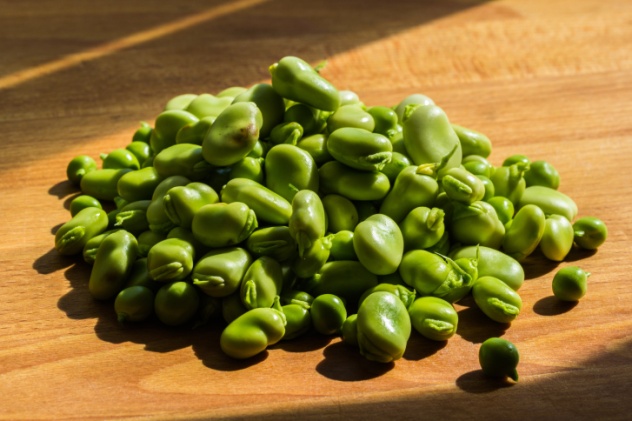
The ancient philosopher Pythagoras believed in vegetarianism, based on the idea of the transmigration of the soul. If human souls could enter animals, then slaughtering animals for their meat was essentially murder. An exception was made for the consumption of animals killed in religious sacrifices, probably because ritual feasting was such an important part of the social life in Greek cities that for Pythagoreans to abstain would have left them socially isolated. Even then, Pythagoras proscribed the parts of animals that he associated with origins and thriving, specifically the loins, testicles, sex organs, bone marrow, feet, and head.
He is also famous for his proscription of fava beans. Aristotle gave multiple explanations as to why Pythagoras banned beans. One explanation was that they resembled sex organs, and Porphyry expanded upon the point by claiming that if you chew up fava beans and leave them in the sun for a while, they start to smell like semen. Another explanation was that they resembled the gates of Hades because they were the only plant without joints, an analogy that was probably completely evident to the ancient Greeks. Some say the proscription was merely a roundabout way of Pythagoras telling his followers not to get involved in politics, because black and white fava beans were used in voting. This explanation seems far too prosaic. Pliny, meanwhile, claimed the Pythagoreans avoided fava beans because they contained the souls of the dead.
One throwaway explanation by Aristotle was “because they’re destructive,” which, if it wasn’t a reference to flatulence, may have had a common-sense explanation. Professors Robert Brumbaugh and Jessica Schwartz claimed in 1980 that the injunction prevented acute hemolytic anemia in individuals with a hereditary deficiency of glucose-6-phosphate dehydrogenase in their red blood cells. This genetic allergy to the beans is called favism and was apparently quite common in the Mediterranean region. That still doesn’t explain this verse by Heraclides Ponticus about the prohibition: “Eating beans is the same as eating the heads of one’s parents.”
3 Ancient Indian Beef

The proscription against the eating of beef by Hindus wasn’t shared by their ancient Vedic ancestors. Cows were invariably a part of ancient Vedic sacrifices to the gods, as well as religious and funeral ceremonies. One hymn in the RgVeda states it outright: “Indra will eat thy bulls.” The Satapatha Brahmana gives a telling quote from the seventh-century-BC philosopher Yajnavalkya: “I for one eat it, provided it is tender.” Ancient texts make references to slaughterhouse practices, as well as slaughtering cows for weddings and the construction of a new house. When distinguished guests arrived, such as one’s teachers, priests, kings, bridegrooms, or Vedic students returning from studying, they were to be presented with a sacrificial bull. Vedic literatures refers to such guests as ghogna, or cow-killers. Smrti Hindu texts sanctioned the consumption of all domestic animals with one row of teeth. The ancient medical text Charaka Samhita proscribed beef for the average person but recommended it for pregnant women.
The later proscription on beef-eating is believed to have been a Brahmanic reaction to the threat of vegetarian Buddhism, which appealed to many farmers, who wished to protect their cattle wealth from hungry diners. The “cow as mother” motif was born as a propaganda tool in the struggle against the Buddhist threat to the existing social order. When University of Delhi Professor Dwijendra Narayan Jha published Holy Cow: Beef in Indian Dietary Traditions, which simply used historical evidence to prove ancient Indians ate beef, the reaction from Hindu fundamentalists was furious. One reviewer said the problem was that Jha’s book “contradicts the party line, which is that we Hindus have always been here in India and have Never Eaten Cow; those Muslims have come in, and Kill and Eat Cows, and therefore must be destroyed.”
2 Zoroastrian Food Restrictions
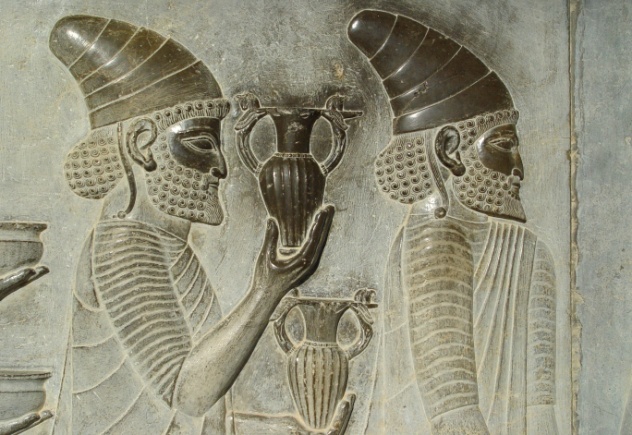
The dietary laws of pre-Islamic Persia were derived from Zoroastrianism, which divided the world of food, associating various dishes with either the beneficent realm of Ohrmazd or the harmful world of Ahreman. Food associated with the latter was usually eaten by foreigners and seen as sinful and impure. The Persian epic Shahnemah quoted a letter from General Rostam-e Farrokhzadan on the matter: “From a diet of camel’s milk and lizards the Arabs have come so far as to aspire to the Persian realm, shame on the revolving universe, oh shame.”
While this was a medieval addition that was absent in the original epic or Sassanid records, it illustrates the general view that the Zoroastrians had of Arab cuisine. They viewed the Arab nomads as consumers of an impure diet including mice, snakes, cats, foxes, tigers, hyenas, worms, and xrafstars, or noxious creatures. One proverb stated: “The Arab of the desert eats locusts, while the dogs of Isfahan drink ice-cold water.”
The eating of xrafstars was associated with the evil god Ahreman because such creatures were believed to have been mis-created by the malevolent deity to plague the world. The pure diet associated with the benevolent Ohrmazd included chicken, lamb, and beef. For the Zoroastrians, the cultures of Persia and India were superior to that of the Arabs due to the difference in cuisine. Though the Persians would eventually accept the Islamic religion from the Arabs, the gap between the traditional eating habits of the two peoples would remain a sore point for centuries. The Persian poet Bashshar ibn Bord wrote (in Arabic):
Never did [a Persian] sing,
camel songs behind a scabby beast,
nor pierce the bitter colocynth out of sheer hunger,
nor dig a lizard out of the ground to eat . . .
1 Aztec Protein

In pre-Columbian Mexico, sources of protein were few and far between. Without domesticated livestock, most Aztec protein came from squash, beans, and maize, supplemented by wild deer, whose numbers dwindled as the population of the empire grew. The Aztecs were able to find a variety of alternative sources of protein as well, including turkeys, fish, frogs, tadpoles, insects, rabbits, hares, armadillos, tapirs, gophers, axolotl salamanders, opossums, weasels, quails, snakes, iguanas, and dogs.
Mesoamerican dogs were hairless due to a genetic adaptation to the tropical climate. Adult dogs were used for hunting and companionship, but puppies were considered a delicacy. Young dogs were castrated and sold in public markets, and the consumption of the adorable and tasty pups was believed to ward off anguish and bad dreams, increase sexual potency, and protect against evil influences.
The Xoloitzcuintli breed is one of the world’s oldest, originating in Mexico over 3,000 years ago. The modern chihuahua is descended from a breed of dog considered sacred, which was roasted as a dish for high priests. In merchant feasts, dog was sometimes combined with turkey in the same dish, which is likely a Thanksgiving alternative you’ve never considered.
Another rich source of protein was tecuitlatl, dried algae loaves served with maize and a sauce made from chili peppers and tomatoes. It was extraordinarily nutritious, with 70 percent protein, as well as vitamins and minerals. It was easier to store, was drought-proof, and grew in saltwater, so it never competed with other food sources.
David Tormsen would like to have the roast puppy in garum and cannabis sauce, sacred onion rings, forbidden beans, and a thick pitcher of holy beer-porridge.


